- Administrator
- Albums and Singles
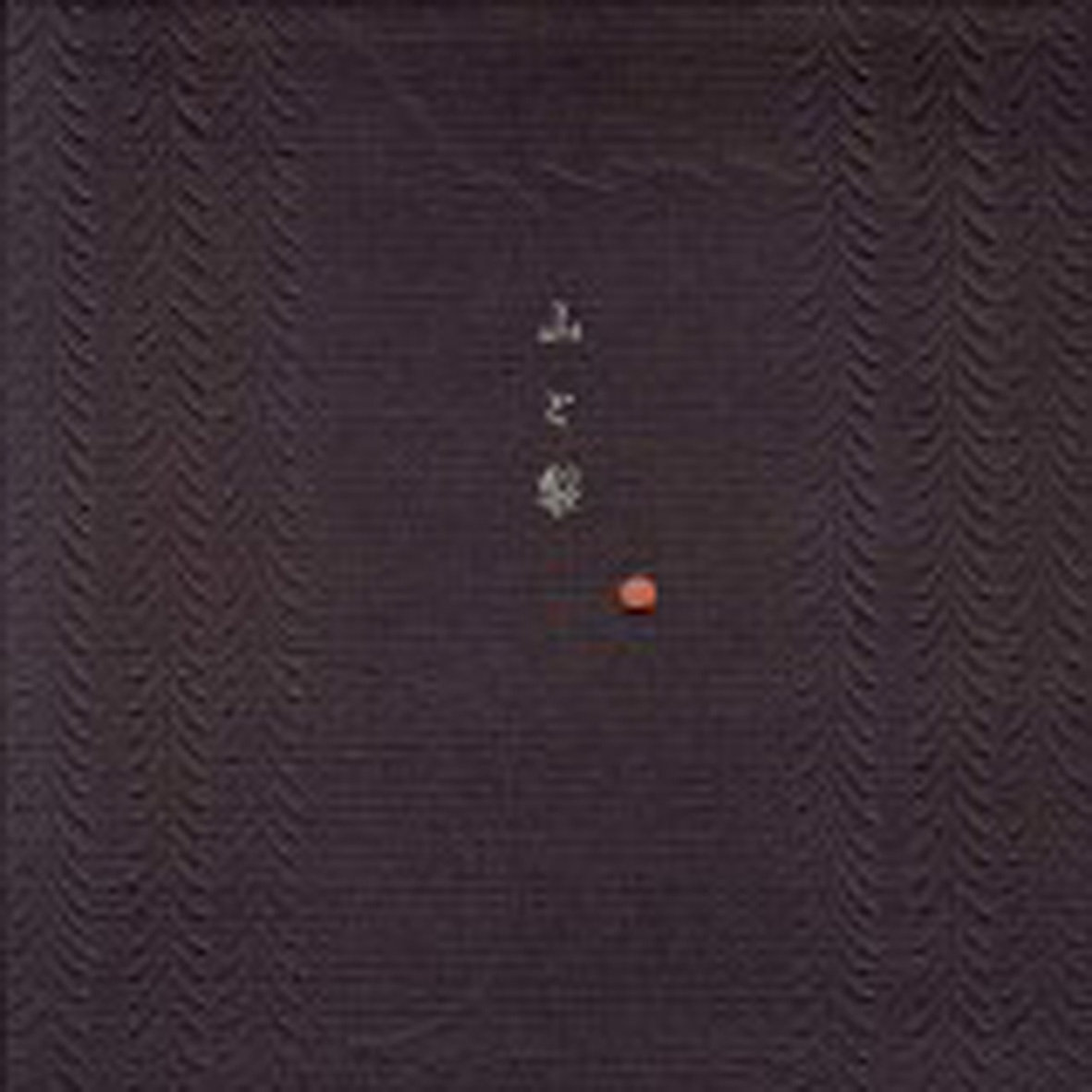 The work of Andrew Chalk and Daisuke Suzuki seems as if it has been intertwined forever, so I was somewhat startled to discover that this is their first new collaborative release in almost a decade. As befits the re-convergence of these two masters of understated tranquility, Yama to Nashi feels like a relaxed and unhurried reunion of old friends rather than a bold new vision. As such, it is a somewhat minor (if lovely) addition to the Siren/Faraway Press oeuvre that mostly lingers in familiar territory, but there are a couple of divergent gems lurking amidst these new pieces that longtime fans will not want to miss.
The work of Andrew Chalk and Daisuke Suzuki seems as if it has been intertwined forever, so I was somewhat startled to discover that this is their first new collaborative release in almost a decade. As befits the re-convergence of these two masters of understated tranquility, Yama to Nashi feels like a relaxed and unhurried reunion of old friends rather than a bold new vision. As such, it is a somewhat minor (if lovely) addition to the Siren/Faraway Press oeuvre that mostly lingers in familiar territory, but there are a couple of divergent gems lurking amidst these new pieces that longtime fans will not want to miss.
For the most part, the languorous and glistening opening piece ("Threads From The Milky Way") sets the tone for the entire album, establishing the overarching aesthetic of sketchlike vignettes of dreamlike, liquescent bliss.It is difficult to tell exactly how Chalk and Suzuki are getting their blurred and slippery tones, but I believe there is a processed electric piano at the heart of these recordings.As the album unfolds, however, Chalk and Suzuki start to drift further and further away from their lazily glimmering and rippling sound pools and both the mood and the palette start to deepen (and darken).The first real shadows start to fall across Yama on the third piece, "Suzume," which casts a mournful spell by weaving discordant harmonies from glacially swelling strings and drifting smears of synth tones.Curiously, that veil of sadness dispels almost as suddenly and unexpectedly as it appeared, as the wonderful "Shelf on Wall" shakes off its initial moody reverie to blossom into a surreal field recording of a Japanese parade.From there, the piece continues to be a pleasantly inventive and evocative surprise, as the parade seems to partially fade away, but leaves a lovely and lyrical flute melody in its wake that dreamily drifts through a woozy fog of gentle arpeggios, crashing waves, and a few lingering tendrils of the raucous festivities (marching men, clattering percussion, children's voices).To my ears, it is the album's true centerpiece (conveniently located in the center of the album, no less), but it is not without strong competition from the album's final stretch.
Although it is considerably shorter, I am also quite fond of "A Sentry on The Roof," which augments its blearily impressionistic cascades of watery electric piano tones with the loud and fitful buzzing of a large bee.That bee makes a surprising amount of difference, which highlights an unusual trend the runs throughout Yama to Nashi: the purely instrumental pieces feel like the soundtrack to a gorgeous sunrise or seaside vista that I am not seeing, while the pieces that prominently feature field recording are considerably more effective at drawing me into the scene.I am a bit curious about why Chalk and Suzuki did not pursue that elegant blurring together of swooning, hazy ambiance and crisp, vibrant textures from the natural world more, as it definitely feels like that synthesis elevates this collaboration into something more transcendent and unique when it happens.If I had to guess, however, I suspect that the reason is that most of Yama to Nashi consists of Chalk and Suzuki's stronger improvisations that occurred on the road to composing the album's epic closing title piece.On one hand, "Yama To Nashi" is not radically different from the rest of the album, as it is built from gently tumbling arpeggios and warmly radiant washes of synthesizer (though there are some buried bird noises hiding in the mix).There is, however, an unexpectedly strong motif resembling a shuddering, digitalized bird call that periodically tears through the placid idyll.That certainly livens thing up, though it is not quite as dramatic as it sounds.The real difference is mostly just time: Chalk and Suzuki allow "Yama to Nashi" to languorously stretch out for over 20 minutes and that suits it beautifully.Duration makes a world of difference with music in this vein: a glimpse of heaven is nice, but getting a chance to linger in it is by far a superior experience.
As is true of most Andrew Chalk albums (both with and without Suzuki) there is very little to grumble about with this album: Chalk and Suzuki have a long history of making lovely and lush music together and Yama to Nashi ends a long hiatus to bring the world more of it.That pleases me.I am, however, the hapless victim of my own high expectations, as I hoped this welcome reunion would result in an enduring classic.Yama is not an enduring classic, though "Shelf on Wall" seems like a strong step towards a more ambitious and immersive future opus.Hopefully it will not take another decade for that to happen, but I am sure I can find some way to keep busy while I wait if it does.In the meantime, Yama to Nashi is a solid to return to form that adds one more quietly beautiful longform work to the Chalk/Suzuki canon.
Samples:
 
Read More
- Administrator
- Albums and Singles
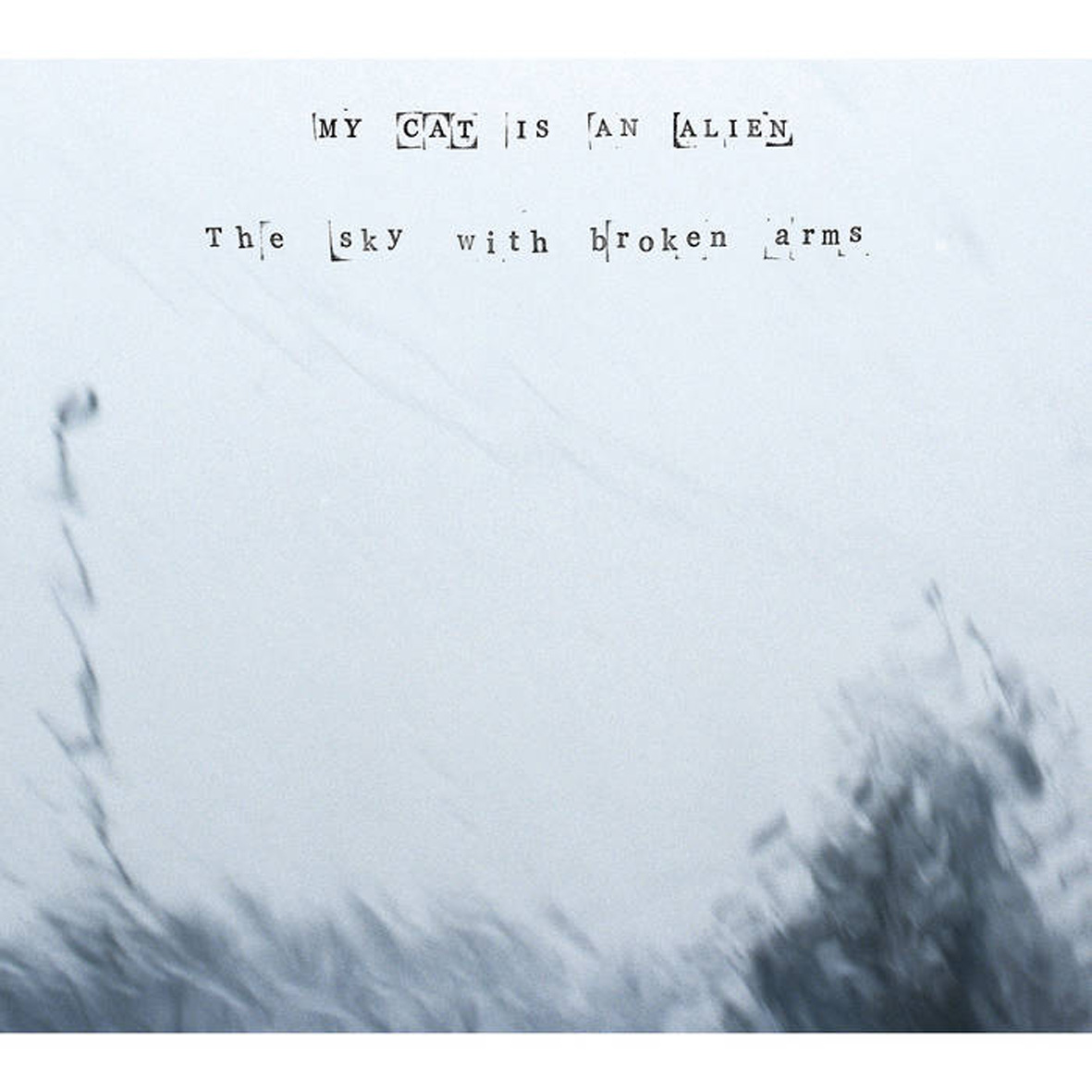 This latest opus from the Opalio brothers continues their restlessly experimental hot streak, taking inspiration from a characteristically bizarre event: two years ago, Roberto discovered that a bunch of his records were corroded by an "inexplicable oxidation process." After some time, he decided to listen to one of them anyway and found himself fascinated by the way the listening experience was transformed by the surface noise. Naturally, the instantaneous composition that resulted from that revelation is considerably more bizarre and idiosyncratic than a mere celebration of crackle and hiss, but the added layer of noise beautifully adds an evocative textural layer to The Sky With Broken Arms' sublime and eerily otherworldly reverie.
This latest opus from the Opalio brothers continues their restlessly experimental hot streak, taking inspiration from a characteristically bizarre event: two years ago, Roberto discovered that a bunch of his records were corroded by an "inexplicable oxidation process." After some time, he decided to listen to one of them anyway and found himself fascinated by the way the listening experience was transformed by the surface noise. Naturally, the instantaneous composition that resulted from that revelation is considerably more bizarre and idiosyncratic than a mere celebration of crackle and hiss, but the added layer of noise beautifully adds an evocative textural layer to The Sky With Broken Arms' sublime and eerily otherworldly reverie.
Every now and then, I come across an album that has uncannily perfect cover art that not only conveys exactly the tone of the album, but seems to exist as an absolutely crucial part of the whole.The Sky With Broken Arms is one such album, as Roberto Opalio's blurred and mysterious photograph of a tree and a streetlight is a window into the similarly blurred and mysterious world that this blearily languorous longform piece inhabits.I should note that "longform" in this case means a mere 36 minutes, so this is actually a comparatively concise and distilled dose of the Opalio's lysergic sorcery, given their recent run of double-, triple-, and sextuple-album epics.Aside from that brevity and the omnipresent crackle and hiss of Roberto's ravaged vinyl, however, this release shares a lot of stylistic common ground with some of the Opalio's more sustained plunges into deep-drone psychedelia.All of the expected elements (the alientronics; the eerily floating, wordless vocals; the surreal loops) are in place as always, yet The Sky With Broken Arms has its own very distinct character, as it paints an extremely vivid picture of a very specific scene (for me, at least).
If this album were a movie, it would be a grainy home video of a sleepy rural town at night: the streets are empty, the one stoplight gently sways in the wind, and the church bell in the center of town hollowly resonates, announcing the time.Something is not quite right, however, as the bell continues to calmly ring again and again long after it has passed any possible earthy hour: time seems to have either frozen, slowed, or gotten stuck in an endlessly looping moment.Also, the bell is not the only sound, as the very air itself seems to have come alive with a crackle that resembles the sparking of a downed power line.And it sounds like a nearby radio has suddenly come to life as well and is now picking up mysterious, swooping transmissions from unknown sources.In fact, it seems like the entire town has been completely enveloped in some kind of unexplained electromagnetic disturbance and I seem to be the only one awake to witness it.Characteristically, things only get stranger from that point, as Broken Arms is essentially just one long, slow descent into escalating weirdness.First, Maurizio’s queasily rippling guitars make it feel like reality is dissolving into a dizzying fever dream.Then, Roberto’s unnervingly spectral vocals start to creep over the piece like a dense, lysergic fog.Or like a sickly green light emanating from a UFO hovering right above the town.Needless to say, there is nothing else on earth quite like this album (or like My Cat is an Alien).Ostensibly, this is music, but that feels like a hopelessly reductive term for the transcendent, reality-disrupting spell that the Opalios cast.This album is roughly as disorienting as unexpectedly waking up in another dimension.Or at the bottom of the sea.
I suppose there are other My Cat is an Alien albums that I like more than this one, but that kind of earthbound thinking truly misses the point of the Opalios' artistry.A new MCIAA album is never just a fresh batch of songs–it is both a legitimate event and an invitation to share the Opalios' hermetic, otherworldly headspace for a brief time.Notably, that headspace is never the same twice, as the Opalios' music is an evolving ritual.It is quite remarkable how the brothers are able endlessly combine and rearrange their unconventional and minimal sound palette into new experiences with their own distinct personalities.Some albums are like a deep trance, some are like an extradimensional nightmare, some are like a plunge into the subconscious, and some make me feel like I am losing my goddamn grip on sanity.This one is a bit different, as it feels like living inside an especially haunting and surreal episode of The Twilight Zone.On one level, it is a bit less "alien" than some of the duo’s more expansive releases, but the few recognizable touches from our physical world arguably make it one of the Opalios' more unnerving and striking releases to date, as the border separating reality from the Opalios' darkly lysergic vision now feels ominously porous.
 
Read More
- Administrator
- Albums and Singles
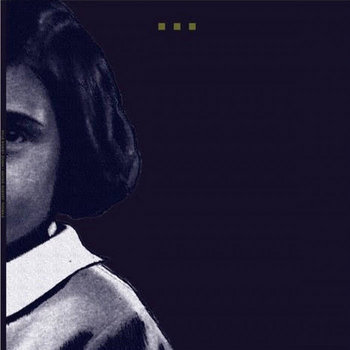
Kyle Bobby Dunn's first physical release since 2014's And the Infinite Sadness is a warm, albeit compressed, sequel to that universally acclaimed 3xLP. In "The Searchers", the Canadian composer's sidelong composition is still set adrift in a sea of infinite nostalgia and reflections of past selves but with an ascending lightness that gleams at the contours of Dunn's most personal and affecting work. "The Searchers," named after the John Ford film, meditates on the way in which the imposing expansiveness of the American West worked upon the minds of its inhabitants who fought, lost and did terrible things to each other in their attempt to claim it. The West, like the slipstream of the course of events in a life, offers no resolution and shakes off any narrative that attempts to define it.
Wayne Robert Thomas is an Indianapolis based musician who composes drones like sculpting in wet cement, each movement turning slowly upwards while simultaneously being locked into time and space. His first appearance on vinyl, Wayne Robert Thomas's deeply felt composition "Voyevoda" utilizes processed electric guitar to fill all available space with lofty and spacious tones that lose nothing of their clarity as the float up to the rafters before settling back down to the nave. A stirring counterpoint Dunn's composition, "Voyevoda" keenly examines one's fidelity to unconquerable nostalgia.
Out May 1st. More information can be found here.
Read More
- Administrator
- Albums and Singles
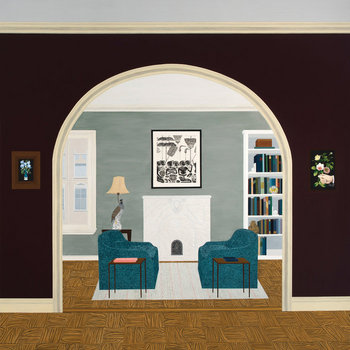
"It was the most beautiful summer of my life."
Memories — places, vacancies, allusions — are fundamental characters in Mary Lattimore's evocative craft. Inside her music, wordless narratives, indefinite travelogues, and braided events skew into something enchantingly new. The Los Angeles-based harpist recorded her breakout 2016 album, At The Dam, during stops along a road trip across America, letting the serene landscapes of Joshua Tree and Marfa, Texas color her compositions. In 2017, she presented Collected Pieces, a tape compiling sounds from her past life in Philadelphia: odes to the east coast, burning motels, and beach town convenience stores. In 2018, from a restorative station — a redwood barn, nestled in the hills above San Francisco's Golden Gate Bridge — emanates Hundreds of Days, her second full-length LP with Ghostly International. The record sojourns between silences and speech, between microcosmic daily scenes and macrocosmic universal understandings, between being alien in promising new places and feeling torn from old native havens. It's an expansive new chapter in Lattimore's story, and an expression of mystified gratitude. A study in how ordinary components helix together to create an extraordinary world.
Read More
- Administrator
- Albums and Singles
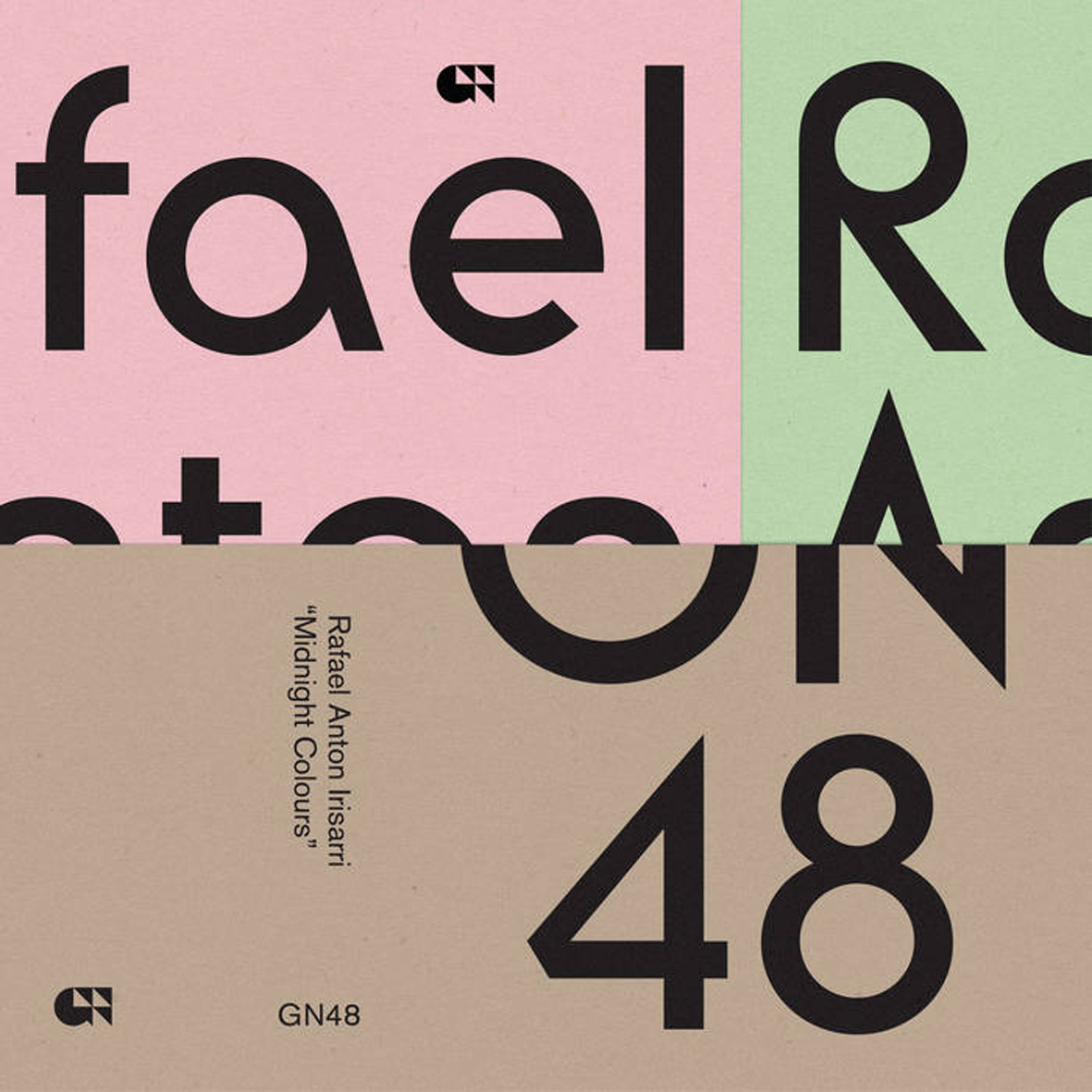 I was a bit surprised to belatedly discover that Irisarri’s latest release was conceived as an imaginary soundtrack to the Doomsday Clock, as Midnight Colours is often an atypically warm and beautiful release, shedding much of the pervasive melancholy that runs throughout his previous work. Perhaps, however, it would be more accurate to say that Irisarri has merely become a bit better at effectively wielding that melancholy, as the shadows that shroud the lush heaven of Midnight Colours tend to add depth and gravitas without crossing the line into brooding reverie. That may sound like a subtle evolution, yet it is quite an important one from my standpoint, as Irisarri's eternal somberness was always a bit of an obstacle for me. I am not normally one to praise accessibility, but I am delighted by it in this instance, as his grainy, hissing, and gorgeously enveloping drones have rarely been more listenable than they are here.
I was a bit surprised to belatedly discover that Irisarri’s latest release was conceived as an imaginary soundtrack to the Doomsday Clock, as Midnight Colours is often an atypically warm and beautiful release, shedding much of the pervasive melancholy that runs throughout his previous work. Perhaps, however, it would be more accurate to say that Irisarri has merely become a bit better at effectively wielding that melancholy, as the shadows that shroud the lush heaven of Midnight Colours tend to add depth and gravitas without crossing the line into brooding reverie. That may sound like a subtle evolution, yet it is quite an important one from my standpoint, as Irisarri's eternal somberness was always a bit of an obstacle for me. I am not normally one to praise accessibility, but I am delighted by it in this instance, as his grainy, hissing, and gorgeously enveloping drones have rarely been more listenable than they are here.
Over the course of his last few albums, I have increasingly found Rafael Anton Irisarri to be quite a fascinating and underappreciated artist, as he is kind of a negative image doppelganger for Tim Hecker.Both artists are incredibly talented and have a similar aesthetic at their core, yet Hecker has lately been reaching towards the heavens with increasingly ambitious, timeless, and thematically powerful compositions while Irisarri continues to burrow further and further inward, deeply feeling all the anxiety and sorrow of our current age and trying to channel that into something meaningful.Put more prosaically, Irisarri remains extremely committed to drone, pouring his soul into his elegantly blurred and swirling sound worlds in hopes of occasionally achieving something transcendent and poetic.With the first few songs on Midnight Colours, he succeeds beautifully in that regard, especially with the opening "The Clock."While it is built on a simple and bittersweetly gorgeous chord progression, the lion's share of Irisarri's artistic vision is devoted to harnessing the cumulative power of small details and layered textures.Regarding the latter, there are very few other artists who are on Irisarri's level, as "The Clock" is a sumptuous feast of woozily ravaged tapes and buried field recordings that hint at deeper mystery and meaning.When he is at his best, Irisarri's work feels like a hallucinatory plunge into the swirling mists of his subconscious, resembling a warm and lovely dream populated with ephemeral fragments of more concrete memories.The sweeping and lush "The Falling Curtain" that follows is similarly revelatory, as a simple two-note pattern acts as a lilting sonar ping that guides me through a rapturous fog of blearily swelling chords, blurred drones, and tape noise.
While it is probably fair to say that Midnight Colours is front-loaded with its two finest moments, it is a thoughtfully sequenced and immersive album from start to finish–it just happens to dissolve more and more into hallucinatory abstraction as it unfolds (for a while, anyway).For example, the sustained, quavering, and engulfing roar of "Oh Paris, We Are Fucked" is not a piece that would have struck me if it were decontextualized from its surroundings, but it is quite a pleasant place to linger for several minutes after "The Falling Curtain" fades away.While the next couple of pieces continue that descent into increasingly diffuse and drifting terrain, there are subtle and cunning machinations at work, as the album gradually darkens and takes firmer form again, though the radiantly burbling "Two and Half Minutes" is a bit of perplexing and tonally anachronistic detour.Aside from that curious aberration, the overall trajectory of Midnight Colours is like slowly descending into a blissful sleep only to be haunted by a sense of vague menace in my dreams…then ruefully awakening into a reality that seethes with simmering dread and regret (as well as quite a bit of stark beauty, thankfully).That dark awakening seems to begin in earnest with "Drifting," which unfolds as an empty-sounding murky thrum beneath a languorous melody that feels distant and corroded.In many ways, it is a corroded inversion of the album's earlier pieces, as the textures are gnarled and scorched and their distorted wake creates a snarl of uncomfortable harmonies. The brief and understated final piece, "A Ruptured Tranquility," is not nearly as overtly blackened, yet is perhaps even more unnerving, as it feels like I am among the innards of a massive clock, surrounded by straining, weary gears that are slowly shuddering to a halt.To quote TS Eliot's The Hollow Men: "This is the way the world ends. Not with a bang but a whimper."
Midnight Colours is mostly devoid of flaws, aside from possibly some curious choices in pacing (Irisarri occasionally makes his weaker pieces too long and his stronger pieces too short).My only significant caveat with this album is that Irisarri's brilliance lies primarily in his production talents: he is always a master craftsman, yet his triumphs as a composer are a bit less consistent.When he is at the peak of his powers in both regards, as he is on Midnight Colours' first two pieces, the results are glorious.The remainder of the album is still quite an absorbing and lushly immersive whole though: I have been listening to it for weeks and I am still finding plenty to like in Irisarri's beautifully roiling and frayed dronescapes.While I have not heard enough of Irisarri’s early work to know whether or not Midnight Colours is his strongest album, I can say without reservation that it is definitely a serious contender for that honor (as well as a significant leap forward artistically).
Samples:
 
Read More
- Administrator
- Albums and Singles
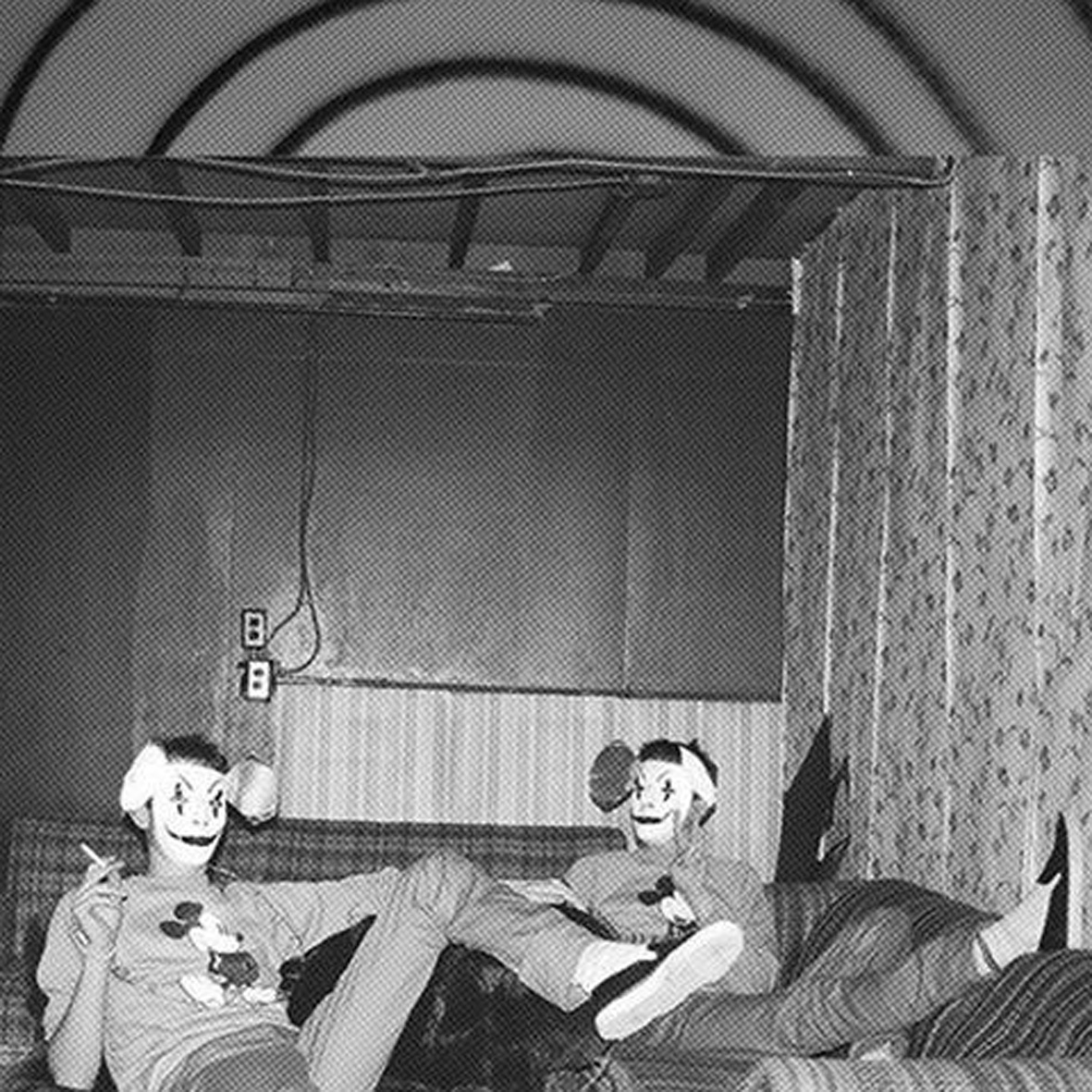 A month ago, I had absolutely no idea who Patrick Flegel was, but the buzz surrounding Superior Viaduct's Cindy Lee reissue series piqued my interest and Flegel quickly became one of my new favorite people. In a past life, Flegel was the frontman of Canadian indie-rock band Women, who famously imploded in a Halloween-costumed, guitar-smashing onstage meltdown in 2010. Soon afterwards, Flegel began dressing in drag and his "diva alter-ego" Cindy Lee was born. Sometimes a full band, sometimes a solo act, Cindy Lee has a strikingly guileless, idiosyncratic, and oft-disturbing aesthetic that almost feels like outsider art. On Act of Tenderness, Flegel's vision focuses primarily on intimately and eerily channeling '60s girl-group pop through a hissing and hallucinatory fog of melancholy. Some songs certainly work better than others, but when Cindy hits the mark, it feels like a memory-haunted chanteuse has stepped directly out of David Lynch's imagination and become actual flesh and blood.
A month ago, I had absolutely no idea who Patrick Flegel was, but the buzz surrounding Superior Viaduct's Cindy Lee reissue series piqued my interest and Flegel quickly became one of my new favorite people. In a past life, Flegel was the frontman of Canadian indie-rock band Women, who famously imploded in a Halloween-costumed, guitar-smashing onstage meltdown in 2010. Soon afterwards, Flegel began dressing in drag and his "diva alter-ego" Cindy Lee was born. Sometimes a full band, sometimes a solo act, Cindy Lee has a strikingly guileless, idiosyncratic, and oft-disturbing aesthetic that almost feels like outsider art. On Act of Tenderness, Flegel's vision focuses primarily on intimately and eerily channeling '60s girl-group pop through a hissing and hallucinatory fog of melancholy. Some songs certainly work better than others, but when Cindy hits the mark, it feels like a memory-haunted chanteuse has stepped directly out of David Lynch's imagination and become actual flesh and blood.
Superior Viaduct/W. 25th/Maple Death
I was lured into Act of Tenderness by the tender and hauntingly lovely would-be single "Power and Possession" (as well as the deliciously weird cover art), but I was truly and wonderfully unprepared for the depth and intensity of Flegel's commitment to his alternate persona.While there are a couple of other gorgeously eerie pop confections hidden amidst these twelve songs, the album as a whole resembles a fractured and lysergic series of glimpses into a complex, lonely, and darkness-shrouded life.As such, it is much more than an album.Flegel has essentially created an entire life and it is quite a complex and compelling one: Act of Tenderness feels like the disjointed audio diary of a tormented pop genius in a fog of pain-killers slowly losing her mind in a series of depressing motel rooms.Not every day is bad though, even if it seems like Cindy has been extremely unlucky in love.In her better moods, Cindy conjures up songs like the aforementioned "Power and Possession," which is an understated and swooningly beautiful swirl of heartbreaking melodies, ghostly swathes of backing vocals, and a few simple chords.Also: plenty of hiss and reverb.Normally, I have a bit of a hostile attitude towards vocalists who always blur their vocals into oblivion with effects, but Flegel is a striking exception, as the hazy lo-fi aesthetic is pitch-perfect for this project: it feels like Lee is always singing her heavenly, heartfelt songs into a crappy tape deck alone in her room and all the veil of hiss and murk makes it all feel like a bleary half-dream.That unsettling feeling of being inside a flickering and precarious dream is further heightened by some of the album's distinctly non-pop moments, like "New Romance" and "Quit Doing Me Wrong," both of which sound troublingly broken and wrong."New Romance" in particular is especially unnerving, as it sounds like Cindy is blissfully and obliviously recording a sweet and sincere vocal track over blown-out, gnarled chaos and squalls of feedback, far too fucked-up to ever notice that all the levels are completely wrong and that the "song" is a flaming wreck.
As disturbed-sounding as it is, however, "New Romance" still has the ghost of a pop song at its core.The shrieking, strangled, and visceral nightmare of "Bonsai Garden," on the other hand, sounds like a full-on psychotic meltdown that would feel confrontational even by Throbbing Gristle standards."Miracle of the Rose" is similarly bananas, resembling a very cool and ritualistic Eastern-influenced psych-rock jam…but with all of the guitars cranked up and layered into an oceanic roar of grinding horror.Those two incredibly striking pieces also illustrate something else quite fascinating about Act of Tenderness: Cindy seems quite fond of The East and also seems to occasionally dissociate from her persona entirely (Cindy the diva would not be particularly into menacingly noisy psychedelia, nor would she ever sing in such a low, male-sounding voice).Some of the other notable tears in Cindy's precarious, kimono-clad reality are considerably less hostile though, as "Operation" sounds like a hypnagogic New Wave hit, while the opening title piece songs like a ravaged 78 of an anachronistic torch song that could have been recorded in 1930s Singapore or Morocco.Even the poppiest moments can be quite bizarre, however, as "What I Need" sounds like girl-group pop played with gloopy analog synthesizers and somnambulantly sung through a malfunctioning microphone.One of Flegel's truly inspired twists on Act of Tenderness is that almost everything is disorientingly "off" in some way or steeped in some kind of vague dread, yet he continually finds new ways for that wrongness to creep into his work.His greatest moment is probably the deeply sensuous and sexy "The Last Train's Come and Gone," which takes a wonderfully languorous groove and a gorgeous guitar hook and marries them to a vaguely Asian melody and an increasingly haunted-sounding backdrop (it sounds a ghoulishly pitch-shifted, spectral, and distressed tape of a Phil Spector-style wall of sound).
Notably, if I had written about this album a few weeks ago, I probably would have probably written a very different review: my initial impression was that Flegel had written a handful of achingly lovely pop songs, then padded out the rest of the album with noisy, lo-fi filler.After essentially living inside this album for the last week, however, I now grasp that the uglier and harsher moments are an absolutely integral part of a rather brilliant artistic vision.The pop songs are certainly great, but a full album of them would be a cavalcade of pretty pastiches rather than what Act of Tenderness actually is: a wildly experimental and disturbing plunge into an absorbing and fully formed world that is half dream and half deeply phantasmagoric nightmare (Flegel's very own Mulholland Drive, if you will).I cannot think of anyone else who is so strikingly adept at both unleashing harrowing, noise-damaged weirdness and crafting sublime pop hooks.I think I want to write Patrick Flegel a gushing fan letter now.This was easily one of the best albums to come out in 2015 and now it is likely to be the single best reissue of 2018.I am properly floored.
Samples:
 
Read More
- Administrator
- Albums and Singles

Chapel Perilous exists whereby the supernatural converges with the everyday - whatever one's definition of reality, this psychological realm serves to prove it endlessly subjective and changeable. Robert Anton Wilson may have laid claim to the modern use of this phrase - as in his 1977 tome Cosmic Trigger - yet there can be few musical outfits in the here and now more worthy of carrying on its tradition than Gnod. In more than a decade on the planet, this singular Salford-birthed entity have married intrepid musical exploration with psychic fearlessness - not to mention a tendency to leave any tag or bracket one attempts to place on them utterly redundant.
In a sense, the latest adventure bearing this title evolved both from the lengthy European tour that the band embarked upon in the wake of their stripped-down and paint-stripping 2017 opus Just Say No The Psycho Right-Wing Capitalist Fascist Industrial Death Machine. Yet recording in Supernova studio in Eindhoven under the auspices of Bob De Wit, the band found themselves free not only to lay down two tumultuous tracks that they had been honing and hammering into shape on the road - the pulverizing fifteen-minute opener "Donovan’s Daughters" and the bracingly brutal "Uncle Frank Says Turn It Down" - but to sculpt more abstract material, utilizing dubbed-out repetition, furious riff-driven rancour, bleak soundscapes and off-the-map experimentation to create an intimidating and invigorating tableau of dystopian dread and unflinching intensity.
Always working purely on their own instincts and co-ordinates, Gnod's pathway into unchartered territory continues to move firmly on with nary a care for the sanity of anyone in their surroundings. Chapel Perilous is a still more indomitable chapter in a transcendental travelogue from an iconoclastic institution that only gathers momentum with the passing of time. Wherever Gnod go in 2018 and beyond, expect reality to be reinvented anew, whatever the consequences.
Out May 4, 2018. More information can be found here.
Read More
- Administrator
- Albums and Singles
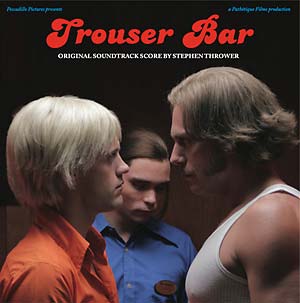
Stephen Thrower
Trouser Bar
ABSTRACT RAVEN (UK)
LP
release date: 4/6/2018
"Thrower scores a pulsating and hypnotic disco suite, comprised of shifting moods that span an epic 20 minutes -- imagine the more inspired moments in the music of Bobby O, Cerrone or Patrick Cowley. To accompany, Thrower has programmed new commissions for two silent films by the 'grandfather of gay porn', Peter De Rome. These tracks, in contrast to the A-side, share the same haunting and experimental tropes as his work in Cyclobe and Coil. Essential." --Jonathan Burnip, DJ Mag
01. Trouser Bar Suite
02. Fire Island Kids Pt.1
03. Encounter
04. Fire Island Kids Pt.2
- Side two features Thrower's music commissioned by the BFI for two silent films by Peter De Rome: Encounter (1971) and The Fire Island Kids (1971).
- Thrower first gained attention in the 1980s, as a member of Coil. He is also a part of Cyclobe and UnicaZürn.
Read More
- Administrator
- Albums and Singles
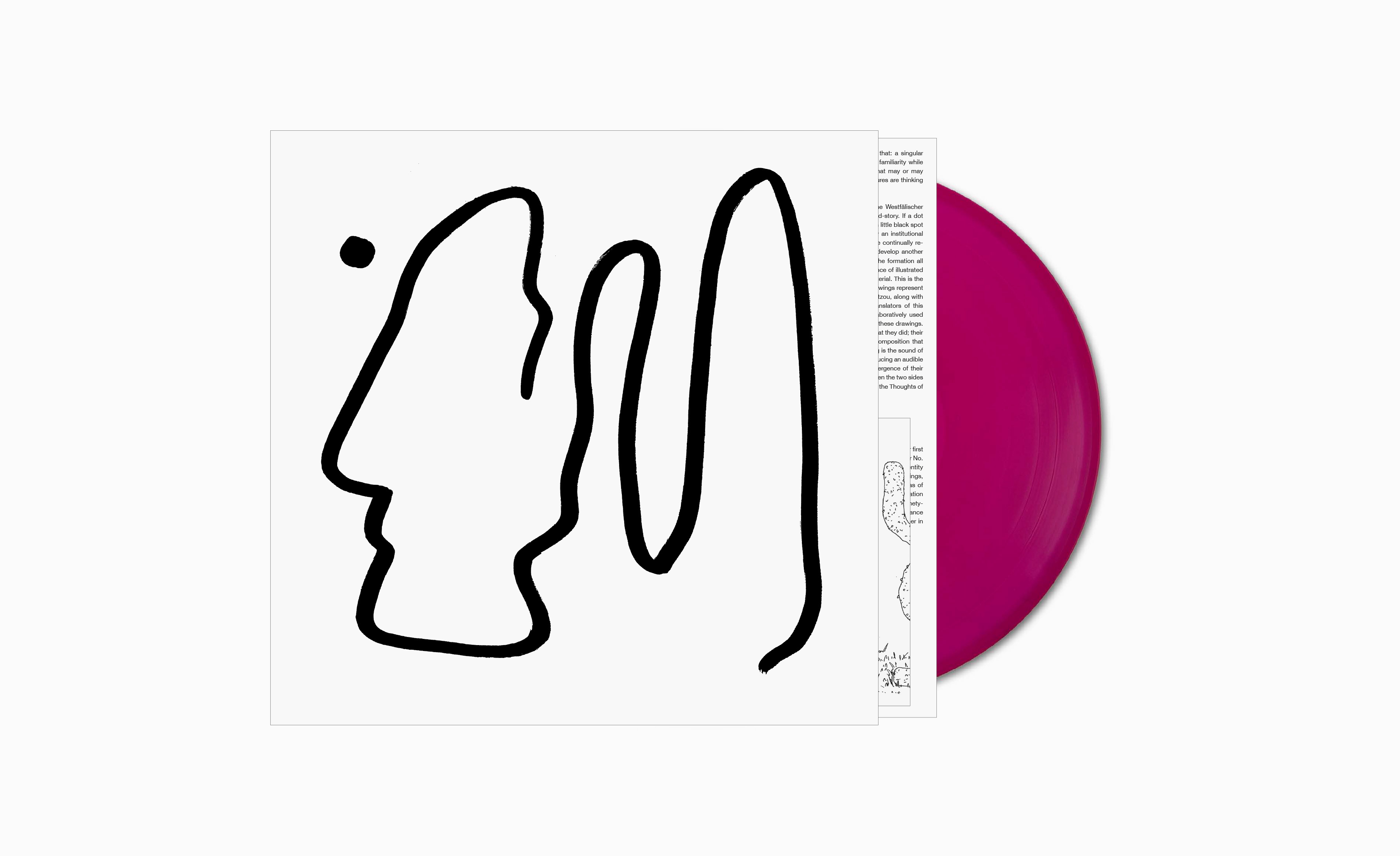
Read More
- Administrator
- Albums and Singles
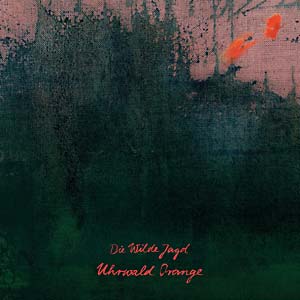
The Uhrwald ("Clockwood") -- a place of dreams and sounds, with its own sense of time. Channeled into his band Die Wilde Jagd, Sebastian Lee Philipp's obsession for this place unleashes a uniquely spellbinding project of minimalist, tenebrous intensity. Recorded in the studio which lends its name to the sophomore album, Uhrwald Orange weaves a dense, atmospheric web of drama, romance, ecstasy, and melancholy. Die Wilde Jagd released their debut album in 2015 (BB 203CD/LP) when Philipp teamed up with producer Ralf Beck (Nalin & Kane, Unit 4). Beck excused himself from "daily business" shortly afterwards, but he retains an important influence on the new LP: Not only did he co-produce and mix the tracks (joined by Australian producer Kris Baha in the final mixdown process), but his collection of vintage analog synthesizers, drum computers, and studio equipment gives Die Wilde Jagd's music its unique, dexterously crafted character. Philipp locked himself in Beck's Uhrwald Orange studio for nights on end to transfer sonic interpretations of his world of images to tape: a nocturnal flight into the subconscious, into a strange world ("Fremde Welt") where ghostly creatures reside -- acid horses, bat boys, 2000 elephants ("Säuregäule", "Flederboy", "2000 Elefanten"). Flemish artist Frans Snyder (1579-1657) provides inspiration with his painting "Animals of the Night" as does the 14th-century collection of songs "Llibre Vermell de Montserrat". Philipp's repetitive electronic sequences include Mediterranean mandolins, psychedelic bass/guitar loops, Georgian choirs, and rattling North African krakebs. Medieval church music mixes with European folklore and improvised jams on this aural journey through the Orient and Occident -- from dark Nordic woods to the Eastern dawn. Philipp offers an insight into his hermetic world of ideas on eight tracks, enriched by sounds of nature captured on a trip through Portugal. Uhrwald Orange is, of course, also Philipp's ode to the recording studio itself, to the analog gear and the ubiquitous EMT Plate reverb. This is where he could realize the sound he imagined, all within Beck's own framework of compressors, preamps and signal paths. Philipp on his work in the studio: "I want to make the equipment in the studio sing, build a world of sound in which every tone, every effect has its own voice. . . . Every element can be found amongst the dwellers and natural forces of the 'Clockwood Orange'."
Read More
- Administrator
- Albums and Singles
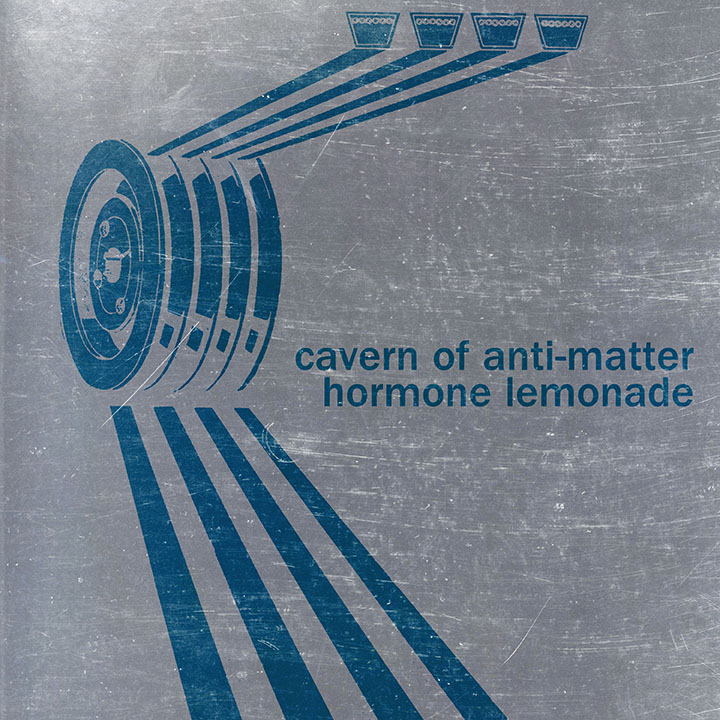
Cavern Of Anti-Matter return for their third studio album on their own Duophonic label. Hormone Lemonade sees the band heavily utilising the sounds of modular synths and home built drum machines, yet still keeping the loose, improvised sound familiar to fans of their first two albums, with minimal guitar melodies and live drum kit helping to build hypnotic layers of texture.
The albums genesis was in the self-constructed rhythm machines of band member Holger Zapf, the Taktron Z3 and Taktron Z2, being recorded to tape during three one-hour sessions. These sessions also included the use of 70s Hohner and Eko drum machines. Holger played his parts in a free-form way and the bpm varied wildly as it was not possible to sync it to any outside controllers.
Tim Gane edited these initial jams into useable chunks and proceeded to overdub each new rhythmic “chunk” with some basic musical ideas, keeping in tune to the hum of the machines and retaining the “feel” of the inherent pulse. Joe Dilworth arrived to lay down a beat over these minimal backing tracks, going with the flow as best he could.
In the following months the music was fleshed out using various synths and sequencers from Roland, Arp, Oberheim and Holger’s modular synth set up. As well as many of the bass and sequencer parts the modular also supplied the chords by tuning each one of it’s five oscillators to specific notes and intervals.
The results of these experiments, improvisations, and refinements, are Hormone Lemonade, which will be released as LP, CD, and Digital Download in March 2018.
Read More

